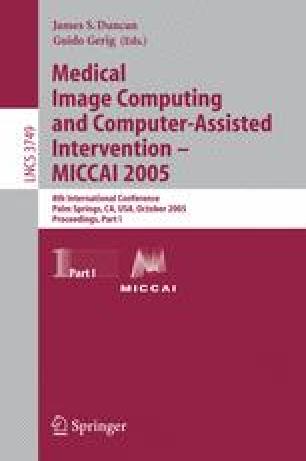
Medical Image Computing and Computer-Assisted Intervention – MICCAI 2005
Publication year: 2005
: 978-3-540-32094-4
This paper presents a method for classification of medical images, using machine learning and deformation-based morphometry. A morphological representation of the anatomy of interest is first obtained using highdimensional template warping, from which regions that display strong correlations between morphological measurements and the classification (clinical) variable are extracted using a watershed segmentation, taking into account the regional smoothness of the correlation map which is estimated by a crossvalidation strategy in order to achieve robustness to outliers. A Support Vector Machine-Recursive Feature Elimination (SVM-RFE) technique is then used to rank computed features from the extracted regions, according to their effect on the leave-one-out error bound. Finally, SVM classification is applied using the best set of features, and it is tested using leave-one-out. The results from a group of 61 brain images of female normal controls and schizophrenia patients demonstrate not only high classification accuracy (91.8%) and steep ROC curves, but also exceptional stability with respect to the number of selected features and the SVM kernel size
: Computer Science, Augmented Reality, Computerassistierte Detektion, Mapping, Radiologieinformationssystem, biomedical data analysis, biomedical modeling, classification, computer-aided diagnosis, image analysis, medical image registration, medical imaging, medical informatics, medical robotics, robot, robotics